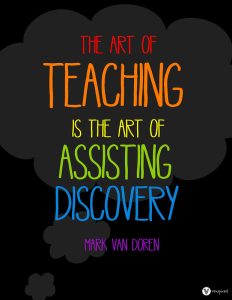As an adult, speaking Italian became very difficult for me. When I was young, my grandmother lived with us and the main language in the house was Italian. She immigrated to Canada in the 1950s and was unable to speak English, so, in order to communicate with her, we needed to speak Italian. When she moved out of the house English became the main language of the household, and as a result, my ability to speak Italian nearly disappeared. This motivated me to learn how to speak it again and in 2014, I began my journey to re-learn the Italian language. Continue reading
She immigrated to Canada in the 1950s and was unable to speak English, so, in order to communicate with her, we needed to speak Italian. When she moved out of the house English became the main language of the household, and as a result, my ability to speak Italian nearly disappeared. This motivated me to learn how to speak it again and in 2014, I began my journey to re-learn the Italian language. Continue reading
Tag Archives: motivation
AI in ESL: Empowering Learners and Bridging Language Gaps
By Margaret Holec
Introduction
The past decade has seen a game-changing impact on English as a Second Language (ESL) education, thanks to Artificial Intelligence (AI). Notably, AI has made students more independent in their learning, helping them secure jobs even with lower English levels. Additionally, direct translation of messages and emails has become seamless, enhancing communication.
1. Independent Learning: AI’s Role in Student Empowerment
AI in ESL education has shifted the focus to personalized learning, allowing students to learn at their own pace. This independence builds confidence and self-reliance as learners navigate language acquisition with tailored support.
Continue readingHow admitting my mistake helped me land my dream job!
Teaching is a lifelong process. Ask any teachers and they will vouch for it. As a teacher, you have committed yourself to being a lifelong learner. Teachers know this and have no hesitation attesting to it, yet it’s hard for some of us to admit our mistakes to our students. That exact moment of saying “Well, I was wrong guys about this, and you were right” could be one of the least favourable moments in our professional life. The reason for this is not hidden from us. Students trust teachers and we don’t want to let them down. What’s more, what happens to our credibility? Does that mistake indicate an irresponsibility to keep ourselves updated and in check?
committed yourself to being a lifelong learner. Teachers know this and have no hesitation attesting to it, yet it’s hard for some of us to admit our mistakes to our students. That exact moment of saying “Well, I was wrong guys about this, and you were right” could be one of the least favourable moments in our professional life. The reason for this is not hidden from us. Students trust teachers and we don’t want to let them down. What’s more, what happens to our credibility? Does that mistake indicate an irresponsibility to keep ourselves updated and in check?
Managing Disruptive Behaviour
While teaching young people is often not easy, managing classrooms with students of mixed abilities and diverse backgrounds can be really challenging. Perhaps one of the biggest challenges is getting a class to be quiet. Picture this: it’s the first day of school and you are required to be the homeroom teacher for a class of boys in their early teens. Boys at this age can be a handful!
The Silent Barrier of Language Learning
Language learning is always challenging, with the fear of making mistakes standing out as one of the barriers. The fear is often rooted in shame, signaling to language learners that they will face rejection in the form of judgment, invalidation, punishment, scolding, etc. This fear leads to students’ reluctance to embrace errors as stepping stones to fluency.
Continue readingLearner’s Autonomy! Is it for all learners?

As an ESL teacher with over a decade of progressive teaching experience, no notion in English language pedagogy was as mind–blowing to me as the idea of learner autonomy. The way that learning and learners are seen as autonomous has always resonated highly with me; I always thought if anyone masters independent learning, they can learn almost anything with joy and efficiency. Recently, however, I’ve been thinking differently about this. Not because I am now a skeptic of this approach, but because I have been wondering if all learners want to be independent learners! Based on my recent encounters and experience at work, I now think maybe there are some learners who learn best without being independent. In this blog post, I’d like to share my own experience with this type of learner. Continue reading
Take A Break
 While some in our TESL Ontario community continue working through March Break (perhaps you had your break in February if you work in higher education), many of us will be taking a breather from our classes. Whether you will be enjoying time to relax at home, or will be getting away from it all, March Break is a great time to take a few moments to catch up on some blogs you missed.
While some in our TESL Ontario community continue working through March Break (perhaps you had your break in February if you work in higher education), many of us will be taking a breather from our classes. Whether you will be enjoying time to relax at home, or will be getting away from it all, March Break is a great time to take a few moments to catch up on some blogs you missed.
To that end, here are a few more recent blogs that we hope will be beneficial to your practice: Continue reading
Moving backwards!

It is clear that one of the goals of ESL students is to improve their listening comprehension skills. This goal might turn into a concern however, when they are preparing for an English proficiency test like IELTS, where achieving a certain score could be life-changing. This has led IELTS instructors and tutors to come up with multiple techniques and tips to help their students. In this blog post, I am going to share a technique that I personally developed and applied in my IELTS class, and discuss how it was viewed by my students.
I call this technique “moving backwards,” and my hope is that it will help my students to improve their listening skills while doing an IELTS listening practice test.
Continue readingRev-Up Reading with Graphic Novels and Comics

January is typically a time when people are looking forward – considering new goals and new approaches. In this post, however, I’ve decided to look back. I’m revisiting some of the information I gave in my very first professional development activity for TESL Ontario: a webinar I co-delivered in 2016 entitled Getting Animated: Graphic Novels in the ESL Classroom. My hope is that this blog will encourage readers to find ways to incorporate graphic novels and/or comics into their 2023 teaching practices.
Continue readingPromoting Diversity, Equity, and Inclusion in Class through Critical Texts, Talks, and Tasks
I asked TESL Ontario educators to record their thoughts on the question “What are one or two ways that you incorporate diversity, equity, and inclusion in your teaching practice?” This post shares their recordings (see link below) and synthesizes their responses, which highlight the importance of infusing criticality in classroom texts, talks, and tasks.
Continue reading



